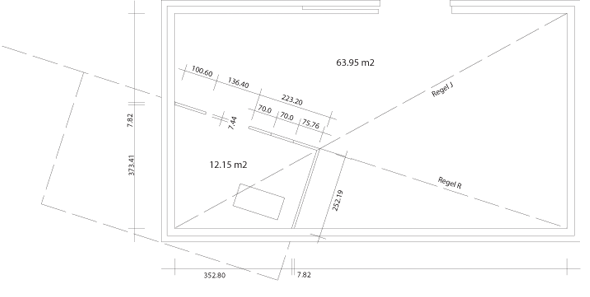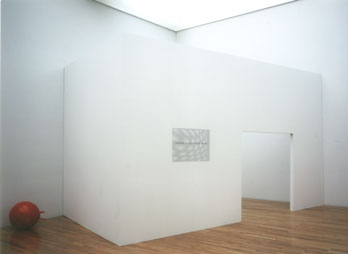
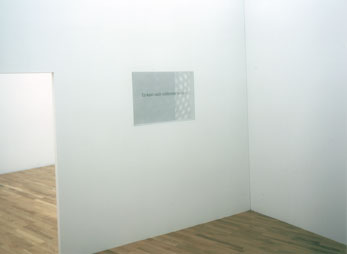
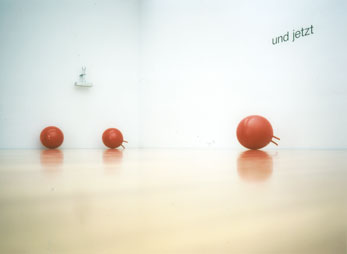
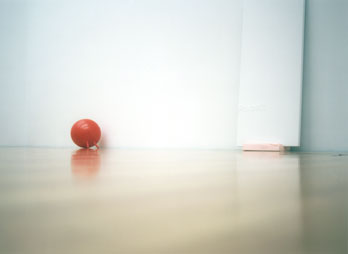
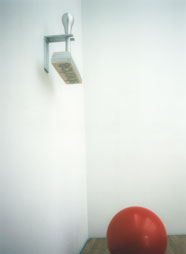
Gallery allerArt/Remise Bludenz, Jan 11 - Feb 4, 2001
Would Jochums exhibition confront us with simple decision criteria and value systems - either for the reality in general or for the arts in particular, he would either be an esoterian or a right-wing populist. When the Austrian politician Haider suggests that 50 years of complexity are enough we simply could answer on behalf of the entire social sciences and sciences of the mind that complexities had just started up to begin with the 21st century. Art that would not understand that is nothing more but kitsch; a policy ignoring that is a behemoth. Jochums display presents itself as a hybrid semantics made of modular imagery and terminology, as a semantic game that gets unruly by going back and forth between signifier and signified. Exhibition descriptions turn all of sudden into self-textures that continually re-load and re-describe themselves by interweaving with other texts and realities into new texts. The trick is that we find ourselves as text-project within a constellation that paradoxically creates community both at the same time as identity and difference.
In my attempt to talk about Jochums exhibition objects in a verbal way I'll blunder into a trap any moment. Seeing the exhibition at first glance we'll immediately take notice of the phrase "and now" (und jetzt). That lettering marks our presence in the very moment by placing us on a timeline and evoking the bemusable moment of decision making processes. On the other hand we find ourselves placed within space by a stamp carrying the imprint "pity" (schade). It literally recalls and registers missed possibilities as an irony of history; I say literally because "history" deduces from "events" - meaning "thing" or "matter". A space in a space stands in the center of the display. With its minified entrance the door to it compells the visitors to humble themselves. The same view through a magic window that has just shown - from outside - "It can hardly get any worse" (Schlimmer kann es nicht mehr werden) presents now - from the inside - "It can easily become worse, though" (Es kann noch schlimmer werden).
A couple of bouncing balls with the inscription "esc" remind us on an ultimate decision to be taken about leaving the program, the operating mode, the value system, respectively indicating the end of a dual philosophy of an either / or. And here at its latest Jochums trap snapped shut by my performance of the duality of the perception process - by distincting between an object of the discourse and the discourse about the object. Concerning Wittgenstein I schould rather shut up now. But as Wittgenstein is the most tragic victim of that trap, we as recipients ought to try to keep our speech going - possibly infintely. To comfort those of my critics who thought, when Feuerstein talks it hardly can get worse, I gonna come to an end with my insights. Hoping that everybody is able to take advantage of the "here and now" flirting with the art, with the artist Richard Jochum oder anybody else in the space.
Thomas Feuerstein
